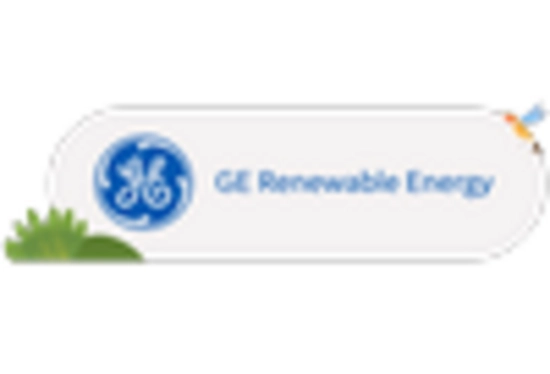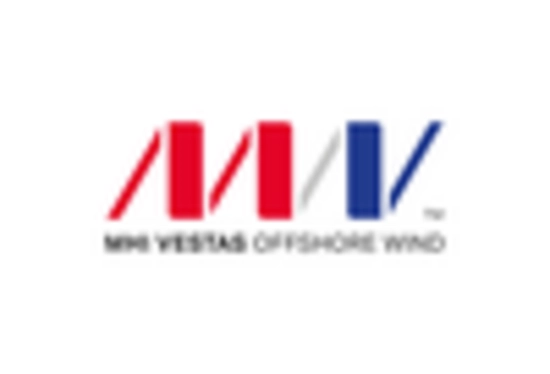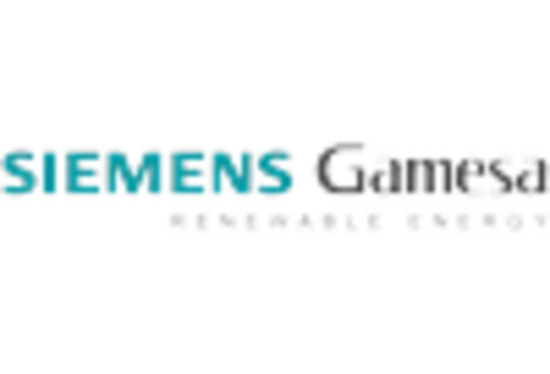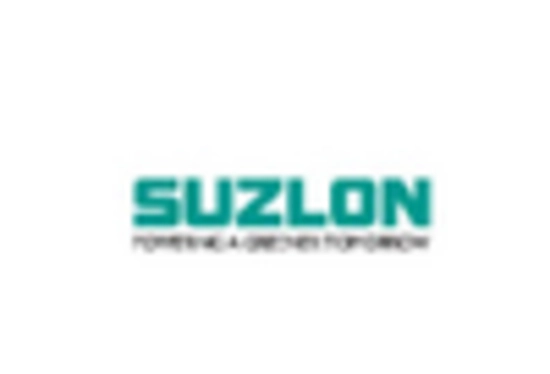Innovations in Material Science
Advancements in material science are significantly influencing the Advanced Wind Turbine Blade Material Market. The introduction of lightweight composites and high-strength materials has revolutionized blade design, allowing for longer and more efficient blades. For instance, the use of carbon fiber reinforced polymers is becoming increasingly prevalent, offering superior strength-to-weight ratios. This innovation not only enhances the performance of wind turbines but also reduces manufacturing costs. As a result, the market is witnessing a shift towards these advanced materials, which are essential for optimizing energy capture and improving overall turbine efficiency. The ongoing research and development in material science are expected to drive further innovations, thereby expanding the Advanced Wind Turbine Blade Material Market.
Regulatory Support for Wind Energy
Regulatory frameworks supporting wind energy development are crucial drivers for the Advanced Wind Turbine Blade Material Market. Governments worldwide are implementing policies that encourage the use of renewable energy, including tax incentives, subsidies, and streamlined permitting processes. These regulations create a conducive environment for the growth of wind energy projects, subsequently increasing the demand for advanced materials used in turbine blades. In 2025, it is anticipated that regulatory support will lead to a 15% increase in new wind installations, further propelling the Advanced Wind Turbine Blade Material Market. As manufacturers align their products with these regulations, the market is likely to experience robust growth, driven by the need for compliance and innovation.
Growing Demand for Renewable Energy
The increasing The Advanced Wind Turbine Blade Material Industry. As nations strive to meet ambitious carbon reduction targets, the demand for wind energy has surged. In 2025, wind energy capacity is projected to reach approximately 1,200 GW, necessitating the development of advanced materials for turbine blades. These materials enhance efficiency and performance, thereby supporting the expansion of wind farms. The Advanced Wind Turbine Blade Material Market is likely to benefit from this trend, as manufacturers seek innovative solutions to meet the rising demand for sustainable energy. Furthermore, government incentives and policies promoting renewable energy adoption are expected to bolster market growth, creating a favorable environment for investment in advanced blade materials.
Focus on Environmental Sustainability
The heightened focus on environmental sustainability is driving the Advanced Wind Turbine Blade Material Market. As stakeholders become more aware of the ecological impacts of energy production, there is a growing demand for materials that minimize environmental footprints. Advanced materials, such as bio-based composites, are gaining traction due to their lower environmental impact compared to traditional materials. This shift aligns with the broader trend of sustainable development, where the Advanced Wind Turbine Blade Material Market plays a pivotal role. In 2025, it is projected that the market for eco-friendly materials will grow by 20%, reflecting the increasing preference for sustainable solutions in wind energy applications. This trend not only supports environmental goals but also enhances the market's appeal to investors and consumers alike.
Rising Investment in Wind Energy Infrastructure
The surge in investment in wind energy infrastructure is a significant driver for the Advanced Wind Turbine Blade Material Market. As countries prioritize renewable energy projects, substantial capital is being allocated to the development of wind farms. In 2025, investments in wind energy are expected to exceed $100 billion, creating a substantial demand for advanced materials that enhance turbine performance. This influx of capital not only supports the construction of new wind farms but also encourages the retrofitting of existing ones with advanced blade materials. Consequently, the Advanced Wind Turbine Blade Material Market is poised for growth, as manufacturers respond to the increasing need for innovative solutions that improve energy efficiency and reduce operational costs.


















Leave a Comment